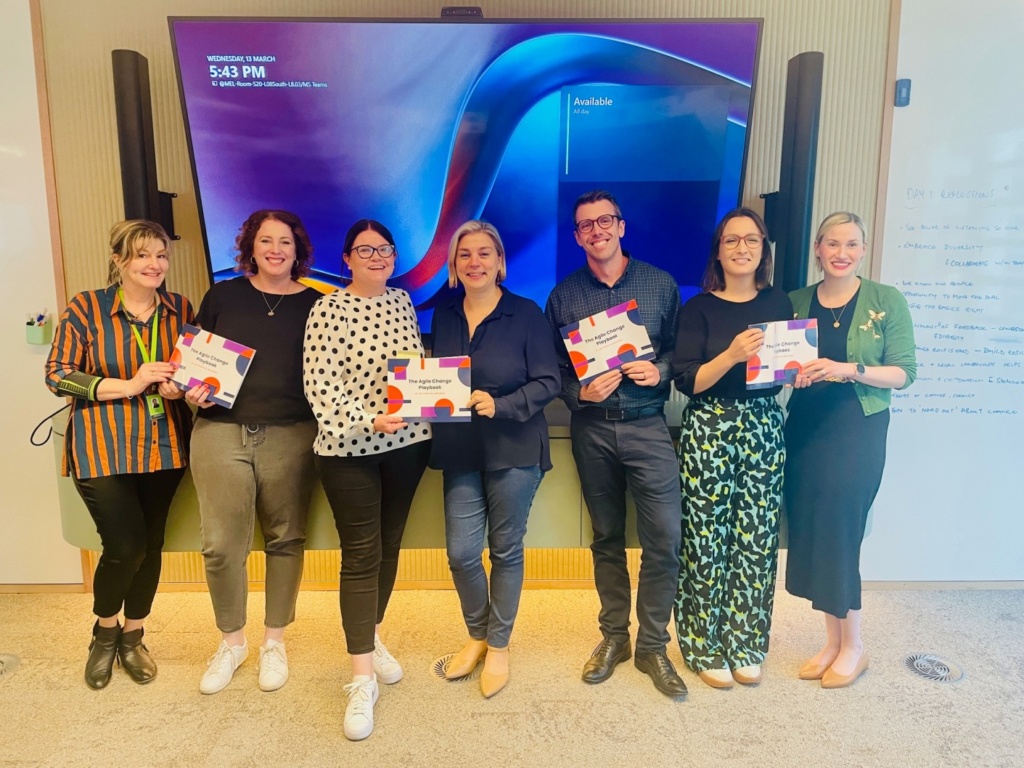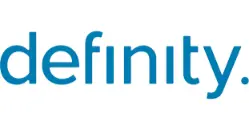Discover a Practical Change Management Process Built for Real-World Challenges
If you’ve been tasked with supporting a change initiative—whether that’s introducing a new system, restructuring a team, or embedding new ways of working—you’ve likely searched for “change management process” to figure out where to start.
Let’s clear the fog.
A change management process doesn’t need to be a rigid checklist or a one-size-fits-all framework.
At its best, it’s a thoughtful and evolving sequence of activities that helps organisations move from “what is” to “what could be” without losing their people along the way.
In this article, I’ll walk you through the five stages of a typical change management process: Discovery, Design, Build, Deliver, and Sustain.
And I’ll show you how agile change practices can be woven into each stage to boost adaptability, transparency, and engagement.
What is a Change Management Process?
Traditionally, a change management process is a structured approach that helps an organisation move from a current state to a desired future state.
It provides a clear sequence of activities to support individuals, teams, and the business through change with minimal disruption.
At its core, the process ensures that changes, whether they are new systems, new structures, or new ways of working, are introduced smoothly, efficiently, and sustainably.
It focuses on both the technical side (what is changing) and the people side (who is affected and how they are supported).
Traditional change management models often assume that change can be fully mapped in advance and followed through a fixed sequence.
In reality, change is rarely linear. Plans shift, feedback emerges, and people need more adaptive support than a rigid framework can offer.
At Agile Change Leadership Institute, we apply an agile lens to the change management process.
This means balancing clear structure with flexibility, allowing change initiatives to adapt to feedback, respond to shifting needs, and stay focused on people throughout the journey.
This is the listening and learning phase.
Before you design your change strategy, you need to understand everything you can about the change itself, the organisational context, and the people it affects. This includes analysing the current state, understanding drivers for change, identifying stakeholders, and assessing change readiness.
Common activities:
- Stakeholder interviews
- Readiness assessments
- Impact analysis
- Reviewing lessons from past initiatives
Agile Change Practices to Try:
- Empathy Mapping & Personas – Help you understand different stakeholder experiences and tailor your approach.
- Change Blast Radius – A visual way to map who is most impacted and when.
- “I Like, I Wish, What If?” – A lightweight, user-centred way to collect feedback that can highlight hidden pain points or opportunities.
- Change Ready Checklist – A fast, repeatable way to test change readiness across teams.
- Change Canvas – everything you know on a page, great for having conversations of exploration
This is where you codify your approach.
Based on your discovery work, you now design how you’ll support the change. This might involve creating a high-level roadmap, outlining the communication strategy, selecting engagement channels, and planning how you’ll measure success.
Common activities:
- Developing a change strategy
- Writing the implementation plan
- Outlining communication approaches
- Planning for resistance and support needs
Agile Change Practices to Try:
- Change Canvas – The next iteration of your one-page snapshot of your change that aligns everyone quickly.
- Minimal Viable Change Process – Helps you avoid over-engineering; build just enough structure to get started.
- Futurespectives – Use these sessions to get stakeholders imagining success and working backward.
- Success Sliders – Visualise competing priorities (e.g. speed vs. quality) and align on what good looks like.
Now, it’s time to get hands-on.
This is where you build the communications, training, engagement materials, community structures, and any operational support mechanisms needed to land the change successfully.
Common activities:
- Drafting comms and training materials
- Preparing FAQs and toolkits
- Mobilising change champions or sponsor coalitions
- Building resource libraries or digital hubs
Agile Change Practices to Try:
- Content Curation & Micro-Lessons – Short, modular content supports learning in the flow of work.
- Lean Filmmaking – Create fast, human-centred video content for storytelling or “how-to” explainers.
- Playbooks – Create reusable guides for leaders or team leads to support consistent local rollout.
- Learning Planner Canvas – Use this to sequence learning activities aligned with your rollout plan.
This is the go-live phase—but remember, it’s a change, not just a launch.
You’re now introducing the new way of working. This often includes running workshops or training, transitioning systems or tools, and managing the people experience as the change becomes real.
Common activities:
- Hosting training or town halls
- Changing over systems or processes
- Troubleshooting and issue resolution
- Coaching leaders and change agents
Agile Change Practices to Try:
- Pecha Kucha – A fun, fast way to present key messages in 20×20 slides (great for roadshows).
- Lean Coffee – Use this format to surface issues from frontline teams in real time.
- Micro-Comms – Send bite-sized messages that drip-feed information over time.
- User-Generated Content – Let employees share their own change stories or lessons.
The change doesn’t end at go-live.
This stage is about making sure the change sticks. It’s when you provide extra support, refine what isn’t working, and gradually hand over ownership to the business. Too often, this phase is undercooked, leading to backsliding or loss of momentum.
Common activities:
- Running post-implementation reviews
- Tracking sentiment and success measures
- Reinforcing new behaviours and habits
- Supporting leaders to embed the change
Agile Change Practices to Try:
- Working Out Loud – Encourage teams to share what they’re doing and learning as they adopt the change.
- Pulse Polling & Fist of Five – Use quick feedback loops to spot issues early and respond.
- Retrospectives – Reflect on what’s working and what could be improved, then iterate.
- Peer Learning Circles – Support sustainability through social learning and shared ownership.
While following a clear change management process helps build structure and consistency, real-world change rarely moves in a straight line. Priorities shift, feedback emerges, and organisations often need faster, more flexible ways to deliver outcomes without losing sight of people.
This is where agile change management practices add real value.
One practical way to make change more adaptive and sustainable is by applying the concept of a Minimum Viable Change Process (MVCP).
The Minimum Viable Change Process Explained
The Minimum Viable [Change] Process (MVCP) applies the principles of Agile’s Minimum Viable Product (MVP) to change management. Instead of building a complete solution upfront, you focus on delivering the smallest and simplest set of change activities that meet immediate needs, then use feedback to guide further development.
In a world where large change teams are rare and change resourcing has become quite lean, it is necessary to establish the minimum change management work you can do and remain effective.
This ensures that transformation efforts are both manageable and impactful.
Key principles of the minimum viable change process include:
Targeted Change
The MVCP advocates for focusing on the most critical changes that yield the most immediate benefits.
Instead of overhauling entire systems or processes at once, it recommends pinpointing specific areas where quick wins are possible, which can lead to broader organisational buy-in and less resistance to future changes.
Iterative Development
Similar to agile project management, the MVCP uses an iterative approach to manage change.
Each cycle involves planning, executing, evaluating, and learning from small-scale changes before scaling them up.
This results in a process that is flexible and responsive to new insights and feedback.
Stakeholder Collaboration
Ensuring that all relevant stakeholders are involved in the change process from the outset is crucial.
The MVCP places a strong emphasis on collaboration and open communication, which helps align all parties involved with the organisational goals and mitigates the risk of misalignment and conflict.
Rapid Implementation
By focusing on minimum viable changes, organisations can execute changes more quickly than traditional approaches.
This rapid implementation allows for faster adaptation to new challenges and opportunities, keeping the organisation agile and competitive.
Feedback and Adaptation
Critical to the MVCP is the continuous loop of feedback and adaptation.
By regularly collecting and analysing feedback from all levels of the organisation, the process remains dynamic and continually improving
This assures that changes are always aligned with the organisation’s evolving needs.
The Minimum Viable Change Process is not just about reducing the scale of change but about making change more thoughtful, strategic, and aligned with immediate business needs.
By adopting this process, leaders can ensure that their change management efforts are both efficient and effective
This provides a solid foundation for continuous improvement and agile adaptation.
Developing an MVCP or Agile Change Management Process
Would you like to try out an agile change process or MVCP without letting go of your existing change management process or model? It’s easy to do!
The first phase is to map. Take your existing change management process, for example: “Discovery, Design, Develop, Deploy, and Sustain”, and put those headings on a piece of paper.
What we want you to do is to map the three agile change capabilities analysis, engagement and communication to your preferred change model of choice.
So, under each heading, work through what is the optimum mix of the three agile change capabilities.
You might like to think about differentiating the capabilities by light, medium, and heavy.
Or perhaps you like numbers, and you want to use a ratio or a percentage mix.
It really doesn’t matter. Perfection or being right is not the goal here.
For example, you might make the discovery phase heavy on analysis, moderate on engagement, and light on communication.
Then, using the Agile Change Playbook, or perhaps your own toolkit, map the various practices to each of these mix of capabilities.
The first time you do this, you’ll end up with a very long list of practices against your own preferred change model, and that’s okay because there are two more phases of logic to be thinking about.
Your next task is to identify which of the agile change practices you need and which you can let go of.
The goal is the smallest number of practices that do the job quickly. You can do this by asking the following four questions:
- What are your business sponsors’ OKRs?
- Which of these change practices will deliver on those OKRs?
- How many people do you have in your team?
- What are their capabilities?
If you’re new to agile, OKR is an acronym that represents time-bound objectives and key results (Objectives and Key Results)
It’s shorthand for what is important to your sponsor.
When you start looking at your work through the lens of your sponsor’s objectives, you will find that it gets easier to simplify your agile change practice.
And it is important to simplify. You’ll be doing your agile change practices in much shorter cycles than you’re used to, and with fewer people to do it.
So, for those who like an equation, this three-phase logic looks like this: take the mapping of change capabilities and practices against your preferred framework, add your sponsor’s objectives, and divide by your team’s capability and size.
The Benefits of Incorporating an MVCP or Agile Change Management Process
Adopting the MVCP as part of your agile change management strategy offers numerous benefits that enhance the agility and responsiveness of your organisation.
Here are some of the key advantages:
Increased Adaptability
Minimum Viable Changes are designed to be small and manageable, which means they can be implemented quickly in response to new information or shifting market dynamics.
This enhances the organisation’s ability to adapt more swiftly to external pressures, ensuring a competitive edge in rapidly changing environments.
Faster Implementation
By focusing on smaller, more manageable changes, the MVCP allows for quicker execution and implementation.
This rapid approach reduces downtime and accelerates the pace at which benefits are realised, enabling organisations to achieve their goals faster.
Enhanced Stakeholder Engagement
The iterative nature of the MVCP encourages continuous feedback from stakeholders throughout the change lifecycle.
This not only helps in refining the changes based on real-world input but also increases engagement and buy-in from those affected by the changes, reducing resistance and fostering a more inclusive workplace culture.
Reduced Risk
Implementing change in smaller increments allows potential issues to be identified and addressed early in the process, significantly reducing the risks associated with large-scale transformations.
This staged approach provides an opportunity for course corrections and adjustments without jeopardising the overall success of the initiative.
Better Resource Allocation
With Minimum Viable Changes, resources are allocated to smaller, clearly defined projects, enhancing the efficiency of resource use.
This focused allocation helps prevent overcommitment and resource wastage, ensuring that every effort delivers maximum impact.
Continuous Learning and Improvement
The agile framework fosters an environment of continuous learning, where each cycle of change provides valuable insights.
These insights fuel improvement in subsequent initiatives, enhancing overall organisational effectiveness and resilience.
By using an MVCP with your agile change management practices, your organisation can achieve more successful outcomes and become a stronger, more adaptable business.
This approach not only streamlines the change management process but also aligns it more closely with the evolving needs and expectations of the business and its stakeholders.
Case Study: Aurecon
The Enterprise Change team at award-winning and highly innovative global engineering firm Aurecon recently used the Certificate of Agile Change Management to help them develop their Minimum Viable Change Process.
Through a process of test and learn, and feedback-driven iteration, the change managers went through the 50 agile change practices in the Certificate program and nominated what they believed the initial MVCP should be for all projects.
They then used those practices and tested which worked the best and which didn’t go so well. They revised their MVCP based on feedback within the team on what was missing.
They also did a healthy level of introspection and challenged themselves to let go of practices and tools that were cumbersome but made them feel comfortable.
This MVCP is now being used on all projects by change practitioners of all levels and is creating consistency and quality at pace.

Want to take today’s insights and turn them into real-world change success?
A traditional change management process gives you a sequence to follow. But an agile mindset gives you the ability to adapt that sequence in real time, based on feedback, learning, and shifting conditions.
By blending both, you create a change process that is structured and responsive. Strategic and human. Capable of supporting the change and the people experiencing it.
Want to learn more? Take our diagnostic to see how agile your change approach really is, or get straight in with our Certificate of Agile Change Management.
This online course will equip you with expert knowledge and practical tools to effectively lead and implement Agile transformations in your organisation in just over 4.5 hours!
Perfect for both individuals and organisations looking to upskill their management staff, our course includes:
- 23 micro lessons in 5 modules
- Over 50 agile change practices to try
- A downloadable library of over 55 agile change practice templates to streamline your professional life
- A comprehensive multiple-choice assessment to conclude the course
- Must-have agile change resources to give you confidence in your work
- A continuously curated list of over 60 resources for additional reading
- A free copy of our book “The Agile Change Playbook” – a finalist in the Australian Business Book Awards (2021)
- A digital badge to amplify your LinkedIn profile


































